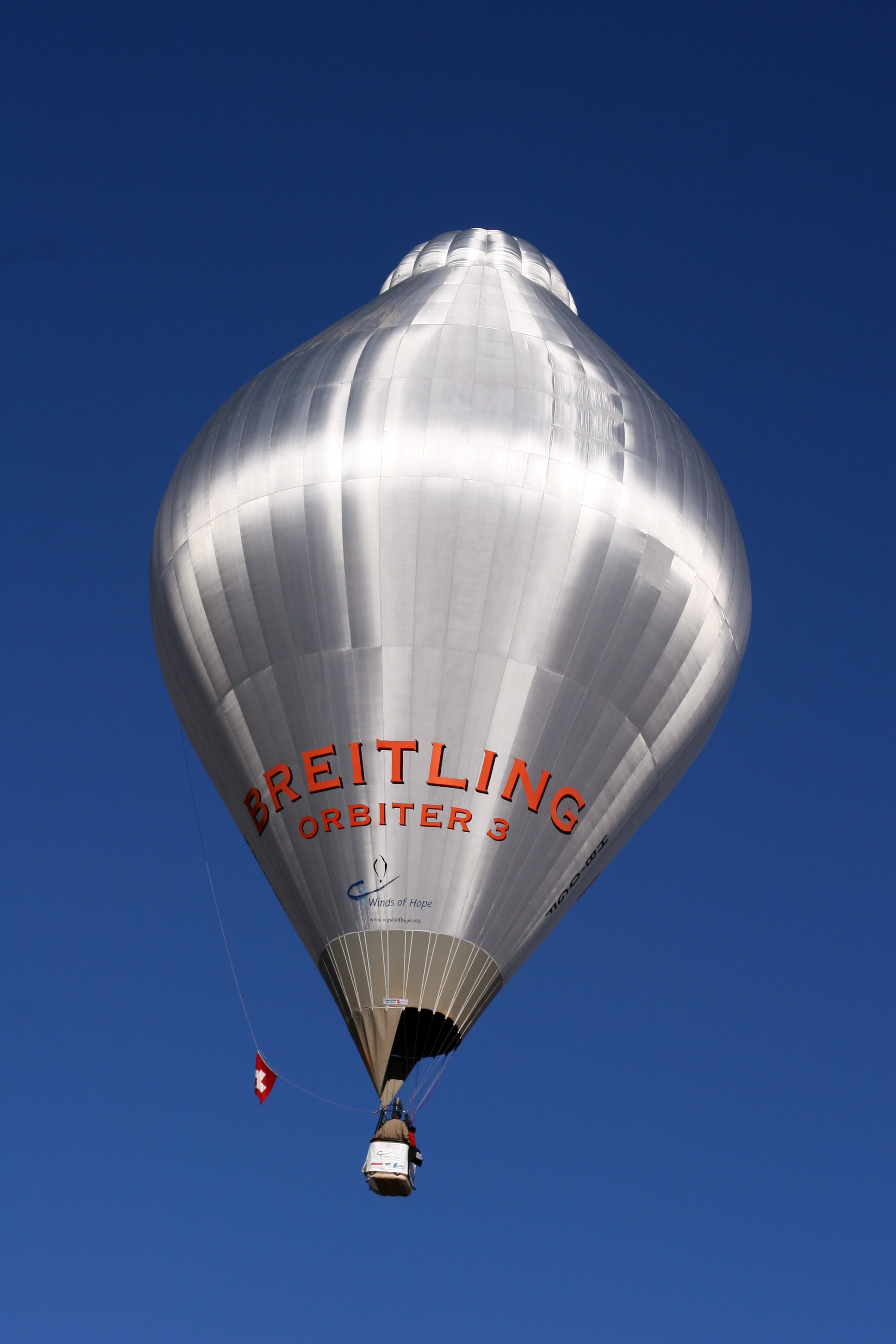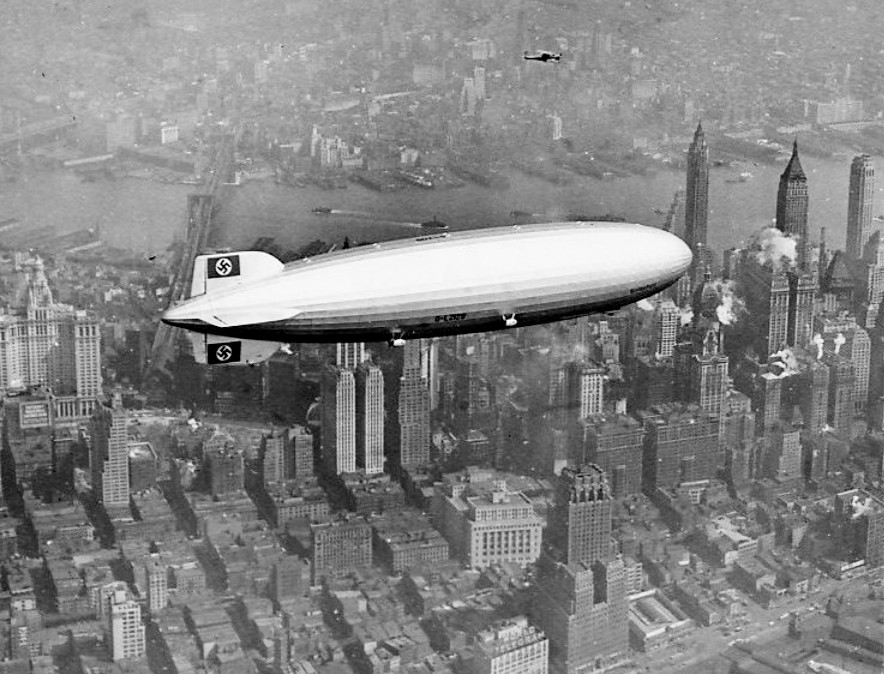|
Balloon (aeronautics)
In aeronautics, a balloon is an unpowered aerostat, which remains aloft or floats due to its buoyancy. A balloon may be free, moving with the wind, or tethered to a fixed point. It is distinct from an airship, which is a powered aerostat that can propel itself through the air in a controlled manner. Many balloons have a basket, gondola, or capsule suspended beneath the main envelope for carrying people or equipment (including cameras and telescopes, and flight-control mechanisms). Aerostation Aerostation is an obsolete term referring to ballooning and the construction, operation, and navigation of lighter-than-air vehicles. Tiberius Cavallo's ''The History and Practice of Aerostation'' was published in 1785. Other books were published on the subject including by Monck Mason. Dramatist Frederick Pilon wrote a play with aerostation as its title. Principles A balloon is conceptually the simplest of all flying machines. The balloon is a fabric envelope filled with a gas t ... [...More Info...] [...Related Items...] OR: [Wikipedia] [Google] [Baidu] |
Gas Balloon
A gas balloon is a balloon that rises and floats in the air because it is filled with a gas lighter than air (such as helium or hydrogen). When not in flight, it is tethered to prevent it from flying away and is sealed at the bottom to prevent the escape of gas. A gas balloon may also be called a '' Charlière'' for its inventor, the Frenchman Jacques Charles. Today, familiar gas balloons include large blimps and small latex party balloons. For nearly 200 years, well into the 20th century, manned balloon flight utilized gas balloons before hot-air balloons became dominant. Without power, heat or fuel, untethered flights of gas balloons depended on the skill of the pilot. Gas balloons have greater lift for a given volume, so they do not need to be so large, and they can stay up for much longer than hot air balloons. History The first gas balloon made its flight in August 1783. Designed by professor Jacques Charles and Les Frères Robert, it carried no passengers or cargo. On ... [...More Info...] [...Related Items...] OR: [Wikipedia] [Google] [Baidu] |
Circumnavigation
Circumnavigation is the complete navigation around an entire island, continent, or astronomical object, astronomical body (e.g. a planet or natural satellite, moon). This article focuses on the circumnavigation of Earth. The first circumnavigation of the Earth was the Magellan's circumnavigation, Magellan Expedition, which sailed from Sanlucar de Barrameda, Spain in 1519 and returned in 1522, after crossing the Atlantic Ocean, Atlantic, Pacific Ocean, Pacific, and Indian Ocean, Indian oceans. Since the rise of commercial aviation in the late 20th century, circumnavigating Earth is straightforward, usually taking days instead of years. Today, the challenge of circumnavigating Earth has shifted towards human and technological endurance, speed, and List of circumnavigations#Miscellaneous, less conventional methods. Etymology The word ''circumnavigation'' is a noun formed from the verb ''circumnavigate'', from the past participle of the Latin verb ''circumnavigare'', from ''circum ... [...More Info...] [...Related Items...] OR: [Wikipedia] [Google] [Baidu] |
Rozière Balloon
A Rozière balloon (or simply Rozière) is a type of hybrid balloon that has separate chambers for a non-heated lifting gas (such as hydrogen or helium) as well as for a heated lifting gas (as used in a hot air balloon or Montgolfière). The design was created by Jean-François Pilâtre de Rozier (1754–1785).Shectman, p. 26. A Rozière-type balloon has the advantage of partial control of buoyancy with much less use of fuel than a typical hot air balloon. This reduction of fuel consumption has allowed Rozière balloons and their crew to achieve very long flight times, as much as several days or even weeks. Early endeavours The first Rozière was built for an attempt at crossing the English Channel on 15 June 1785. Contemporary accounts state that the balloon caught fire, suddenly deflated and crashed near Wimereux in the Pas-de-Calais, killing Rozier, who was riding the balloon. Modern era Today's Rozière designs use non-flammable helium rather than hydrogen. Their primary ... [...More Info...] [...Related Items...] OR: [Wikipedia] [Google] [Baidu] |
Methane
Methane ( , ) is a chemical compound with the chemical formula (one carbon atom bonded to four hydrogen atoms). It is a group-14 hydride, the simplest alkane, and the main constituent of natural gas. The abundance of methane on Earth makes it an economically attractive fuel, although capturing and storing it is difficult because it is a gas at standard temperature and pressure. In the Earth's atmosphere methane is transparent to visible light but absorbs infrared radiation, acting as a greenhouse gas. Methane is an Organic chemistry, organic Organic compound, compound, and among the simplest of organic compounds. Methane is also a hydrocarbon. Naturally occurring methane is found both below ground and under the seafloor and is formed by both geological and biological processes. The largest reservoir of methane is under the seafloor in the form of methane clathrates. When methane reaches the surface and the Atmosphere of Earth, atmosphere, it is known as atmospheric methane. ... [...More Info...] [...Related Items...] OR: [Wikipedia] [Google] [Baidu] |
Ammonia
Ammonia is an inorganic chemical compound of nitrogen and hydrogen with the chemical formula, formula . A Binary compounds of hydrogen, stable binary hydride and the simplest pnictogen hydride, ammonia is a colourless gas with a distinctive pungent smell. It is widely used in fertilizers, refrigerants, explosives, cleaning agents, and is a precursor for numeous chemicals. Biologically, it is a common nitrogenous waste, and it contributes significantly to the nutritional needs of terrestrial organisms by serving as a precursor to fertilisers. Around 70% of ammonia produced industrially is used to make fertilisers in various forms and composition, such as urea and diammonium phosphate. Ammonia in pure form is also applied directly into the soil. Ammonia, either directly or indirectly, is also a building block for the synthesis of many chemicals. In many countries, it is classified as an List of extremely hazardous substances, extremely hazardous substance. Ammonia is toxic, cau ... [...More Info...] [...Related Items...] OR: [Wikipedia] [Google] [Baidu] |
Helium
Helium (from ) is a chemical element; it has chemical symbol, symbol He and atomic number 2. It is a colorless, odorless, non-toxic, inert gas, inert, monatomic gas and the first in the noble gas group in the periodic table. Its boiling point is the lowest among all the Chemical element, elements, and it does not have a melting point at standard pressures. It is the second-lightest and second-most Abundance of the chemical elements, abundant element in the observable universe, after hydrogen. It is present at about 24% of the total elemental mass, which is more than 12 times the mass of all the heavier elements combined. Its abundance is similar to this in both the Sun and Jupiter, because of the very high nuclear binding energy (per nucleon) of helium-4 with respect to the next three elements after helium. This helium-4 binding energy also accounts for why it is a product of both nuclear fusion and radioactive decay. The most common isotope of helium in the universe is helium-4, ... [...More Info...] [...Related Items...] OR: [Wikipedia] [Google] [Baidu] |
Coal Gas
Coal gas is a flammable gaseous fuel made from coal and supplied to the user via a piped distribution system. It is produced when coal is heated strongly in the absence of air. Town gas is a more general term referring to manufactured gaseous fuels produced for sale to consumers and municipalities. The original coal gas was produced by the coal gasification reaction, and the burnable component consisted of a mixture of carbon monoxide and hydrogen in roughly equal quantities by volume. Thus, coal gas is highly toxicity, toxic. Other compositions contain additional Calorific Value, calorific gases such as methane, produced by the Fischer–Tropsch process, and volatile hydrocarbons together with small quantities of non-calorific gases such as carbon dioxide and nitrogen. Prior to the development of natural gas supply and transmission—during the 1940s and 1950s in the United States and during the late 1960s and 1970s in the United Kingdom and Australia—almost all gas for fu ... [...More Info...] [...Related Items...] OR: [Wikipedia] [Google] [Baidu] |
Hindenburg Disaster
The ''Hindenburg'' disaster was an airship accident that occurred on May 6, 1937, in Manchester Township, New Jersey, Manchester Township, New Jersey, United States. The LZ 129 Hindenburg, LZ 129 ''Hindenburg'' (; Aircraft registration, Registration: D-LZ 129) was a German commercial passenger-carrying rigid airship, the lead ship of the Hindenburg class airship, ''Hindenburg'' class, the longest class of flying machine and the largest airship by envelope volume."Hindenburg Statistics." airships.net, 2009. Retrieved: July 22, 2017. It was designed and built by the Zeppelin Company (Luftschiffbau Zeppelin, ''Luftschiffbau Zeppelin GmbH'') and operated by the German Zeppelin Airline Company (''Deutsche Zeppelin-Reederei''). It was named after ''Generalfeldmarschall'' Paul von Hindenburg, who was President of Germany (1919� ... [...More Info...] [...Related Items...] OR: [Wikipedia] [Google] [Baidu] |
Hydrogen
Hydrogen is a chemical element; it has chemical symbol, symbol H and atomic number 1. It is the lightest and abundance of the chemical elements, most abundant chemical element in the universe, constituting about 75% of all baryon, normal matter. Under standard conditions, hydrogen is a gas of diatomic molecules with the chemical formula, formula , called dihydrogen, or sometimes hydrogen gas, molecular hydrogen, or simply hydrogen. Dihydrogen is colorless, odorless, non-toxic, and highly combustible. Stars, including the Sun, mainly consist of hydrogen in a plasma state, while on Earth, hydrogen is found as the gas (dihydrogen) and in molecular forms, such as in water and organic compounds. The most common isotope of hydrogen (H) consists of one proton, one electron, and no neutrons. Hydrogen gas was first produced artificially in the 17th century by the reaction of acids with metals. Henry Cavendish, in 1766–1781, identified hydrogen gas as a distinct substance and discovere ... [...More Info...] [...Related Items...] OR: [Wikipedia] [Google] [Baidu] |
Lifting Gas
A lifting gas or lighter-than-air gas is a gas that has a density lower than normal atmospheric gases and rises above them as a result, making it useful in lifting lighter-than-air aircraft. Only certain lighter-than-air gases are suitable as lifting gases. Dry air has a density of about 1.29 g/L (gram per liter) at standard conditions for temperature and pressure (STP) and an average molecular mass of 28.97 g/mol, and so lighter-than-air gases have a density lower than this. Gases used for lifting Hot air Heated atmospheric air is frequently used in recreational ballooning. According to the ideal gas law, an amount of gas (and also a mixture of gases such as air) expands as it is heated. As a result, a certain volume of gas has a lower density as its temperature increases. The temperature of the hot air in the envelope will vary depending upon the ambient temperature, but the maximum continuous operating temperature for most balloons is . Hydrogen Hydrogen, being the ... [...More Info...] [...Related Items...] OR: [Wikipedia] [Google] [Baidu] |








